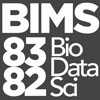Syllabus
General Information
Lead Instructor: Stephen Turner, PhD
Co-instructor/TA: VP Nagraj
When:
Spring 2016 Module S1
Feb 15 - Mar 21, 2016
1:00pm - 4:00pm
Where: Carter Classroom, Health Sciences Library (downstairs one floor, to the right)
Textbook: Available online (free!): bioconnector.org/bims8382/textbook.pdf
Week 1: Introduction to R
This novice-level introduction is directed toward life scientists with little to no experience with statistical computing or bioinformatics. This interactive introduction will introduce the R statistical computing environment. The first part of this workshop will demonstrate very basic functionality in R, including functions, functions, vectors, creating variables, getting help, filtering, data frames, plotting, and reading/writing files.
Week 2: Advanced Data Manipulation with R
Data analysis involves a large amount of janitor work – munging and cleaning data to facilitate downstream data analysis. This session assumes a basic familiarity with R and covers tools and techniques for advanced data manipulation. It will cover data cleaning and “tidy data,” and will introduce R packages that enable data manipulation, analysis, and visualization using split-apply-combine strategies. Upon completing this lesson, students will be able to use the dplyr package in R to effectively manipulate and conditionally compute summary statistics over subsets of a “big” dataset containing many observations.
Week 3: Advanced Data Visualization with R and ggplot2
This session will cover fundamental concepts for creating effective data visualization and will introduce tools and techniques for visualizing large, high-dimensional data using R. We will review fundamental concepts for visually displaying quantitative information, such as using series of small multiples, avoiding “chart-junk,” and maximizing the data-ink ratio. After briefly covering data visualization using base R graphics, we will introduce the ggplot2 package for advanced high-dimensional visualization. We will cover the grammar of graphics (geoms, aesthetics, stats, and faceting), and using ggplot2 to create plots layer-by-layer. Upon completing this lesson, students will be able to use R to explore a high-dimensional dataset by faceting and scaling arbitrarily complex plots in small multiples.
Week 4: Reproducible Research & Dynamic Documents
Contemporary life sciences research is plagued by reproducibility issues. This session covers some of the barriers to reproducible research and how to start to address some of those problems during the data management and analysis phases of the research life cycle. In this session we will cover using R and dynamic document generation with RMarkdown and RStudio to weave together reporting text with executable R code to automatically generate reports in the form of PDF, Word, or HTML documents.
Weeks 5-6: Introduction to RNA-seq data analysis
This session will introduce both the Linux/UNIX operating system and a cloud computing environment, focusing on analyzing real data from a biological application - analyzing RNA-seq data for differentially expressed genes. The first part will introduce basic operation in a cloud-enabled UNIX environment, and will cover the first steps in an RNA-seq analysis including QC, alignment, and quantitation. The second part will cover differential gene expression analysis of the RNA-seq data using Bioconductor packages.
